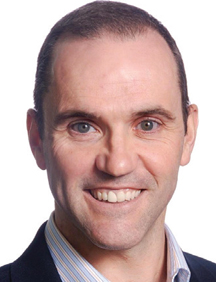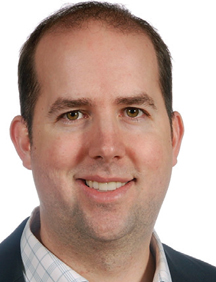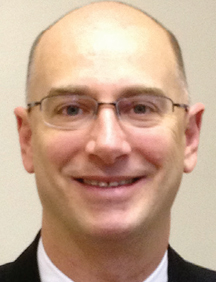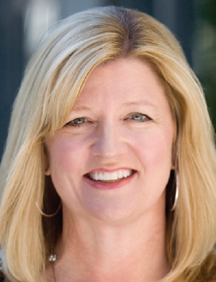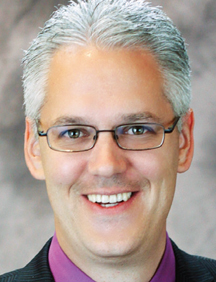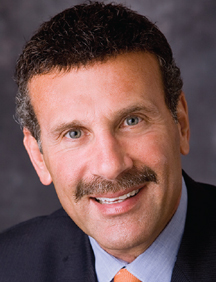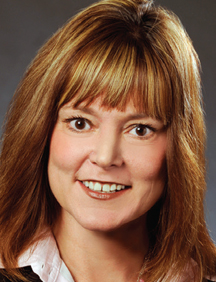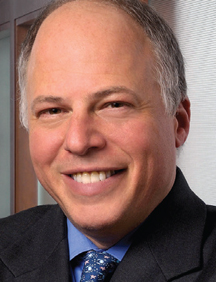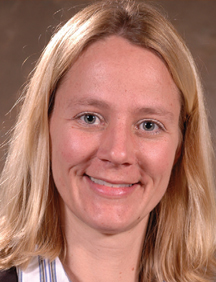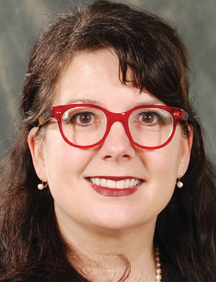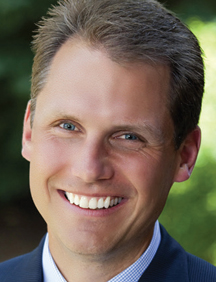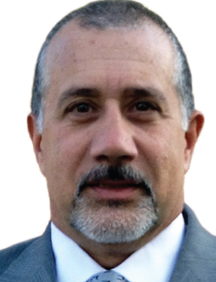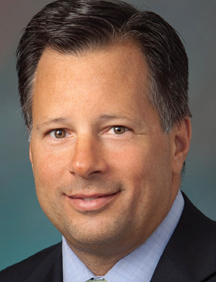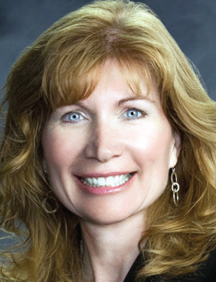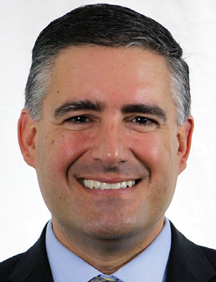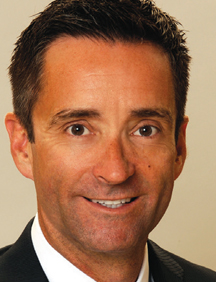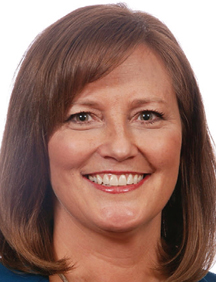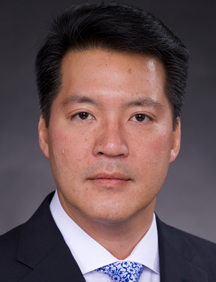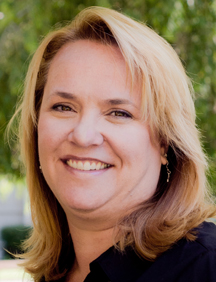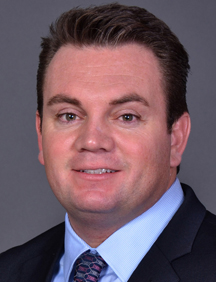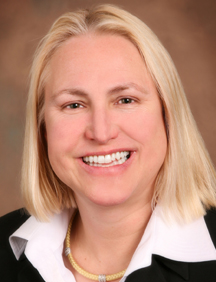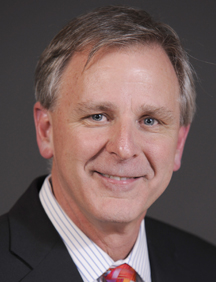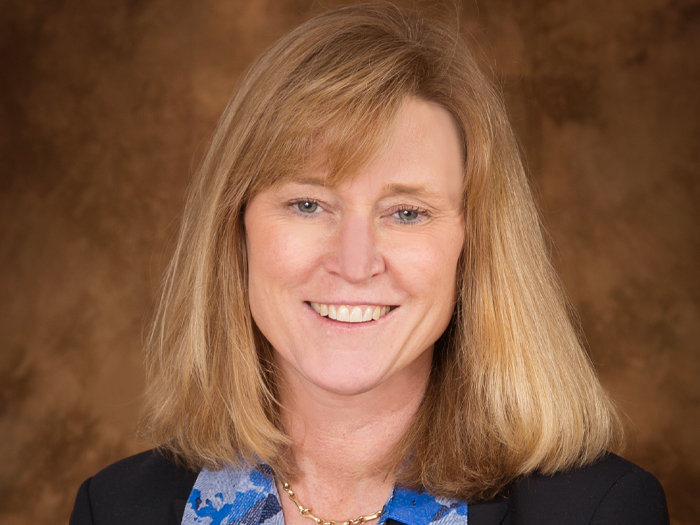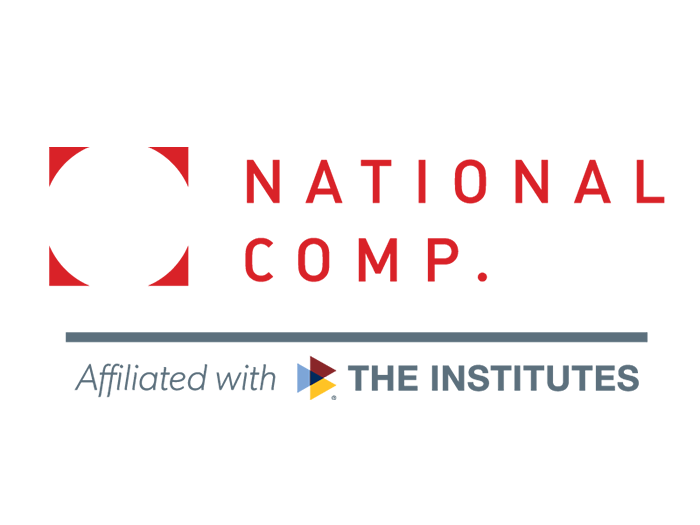2015 Power Broker
Employee Benefits
Retention Solutions
Some companies are more serious than others when it comes to recruitment. Take the major petrochemical firm, which — with the guidance of Rob Austin — pays into new hires’ 401(k) plans just for joining the firm.
“The company contributes 5 percent of their salary into a 401(k) account whether or not the employee contributes anything on their own,” said a company official. “If the employee puts in 8 percent of their salary, we will give them an additional four.”
In a sector where employment is close to 100 percent, the program has been a clear success. Since implementation on Jan. 1, 2014, all 4,000 of the global firm’s U.S. employees have been enrolled in the plan.
“We couldn’t have done it without Rob Austin’s counsel. It was his guidance and market data that helped us come to the conclusion to implement this plan design,” said the official.
The petrochemical firm is in good company. Austin has also helped a major retailer, which regularly sees the turnover of tens of thousands of employees, to implement a 401(k) that fits that particular demographic.
“We flex by 70,000 team members every season,” said a benefits and behavioral expert at the firm. The retailer needed to reward employees who were sticking around by putting something meaningful into their plans. Austin helped to implement a generous 401(k) plan employees can join quickly and easily online. The participation rate among corporate employees sits around 97 percent.
Timely and Technical Expertise
“I love Chris and I love working with him,” said a client of Chris Birch’s at a global packing firm. “I work with him day-to-day and we have quite a few plans that he services,” she said, adding that at one time her company was servicing various defined benefit and retiree medical plans though a number of providers.
“Recently, we’ve transitioned 10 of those plans to Aon Hewitt,” she said. “It made sense. We already had a working relationship with Chris and his team. Moreover, the quality of their work and the pricing they’ve presented made this an advantageous choice.”
Another client pointed to a pension savings windfall achieved due to Birch’s pension regulations know-how.
Last August, President Obama signed the Highway and Transportation Funding Act of 2014, also known as HATFA. HATFA expands on the pension funding stabilization that was initially provided under prior legislation that reduces minimum funding requirements for corporate pension plan sponsors — thereby increasing both their profits and taxes.
Because of the regulatory change and Birch’s technical savvy, subject matter expertise, and timeliness, a multibillion-dollar market leading global manufacturer was able to reduce its pension contributions by literally several hundreds of millions of dollars, said its pension director and assistant treasurer.
“Chris is really down to earth and never misses a deliverable,” added an HR director who has had a relationship with Birch since 2007.
Protecting the Protectors
Don’t those who spend their lives caring for the disenfranchised deserve exceptional coverage themselves? Absolutely, said a human resources official at a nonprofit charitable organization on the West Coast whose stock in trade is providing health care to the poor.
“We can’t have our employees providing care to low-income and uninsured individuals and not have the proper programs to take care of them as employees,” she said. That’s made her a huge fan of Tim DePriest, who has been working with the official for a year now and understands the needs of her population perfectly, she said.
“He knows that our employees need to be taken care of first and foremost — he gets that without our needing to explain it to him,” she said.
He has also helped the organization save thousands on its health care spending. Within three months of working with this organization, DePriest negotiated a 50 percent reduction on the carriers’ renewal increases with no downgrade in benefits, funded the $40,000 exit penalty of the previous broker, and avoided noncompliance with ACA regulations, which would have resulted in potential fines in excess of $100,000.
Stephanie Sztanski, human resources director with the Oakwood School of North Hollywood, Calif., said that for about 35 years her school’s health plan was on “autopilot,” with individual local professionals handling the program.
“Bottom line is he brokered out our medical, dental, vision life and disability, and saved us over $200,000 in the process during the past year,” she said.
Just in Time
“Thank goodness that Amy Fossum came along,” said Debi Sapp, vice president of human resources at Banner Bank Corp., a community bank organization that operates in Washington State, Oregon and Idaho.
Several years ago, Banner had just 50 branches. Now, with an acquisition of American West Bank on the way, it expects to have more than 200.
“A couple of years ago, Amy made us get into a wellness program,” said Sapp, adding that for the past three years her company had seen health insurance premium increases of 8 percent, 19 percent, and 25 percent, respectively.
“Today, with the new wellness program in place, the 2013-2014 policy year was the first year in recent memory we had no increase at all. That’s pretty extraordinary,” she said, “especially with trends in our area up to 15 percent increases annually.”
“What I really like about Amy is even though she is a senior vice president at Alliant, she is a great travel companion for open enrollment meetings at places like our sawmills, where she connects really well with people from general labor to management,” said Nancy Helseth, vice president of HR at wood products firm Collins Cos., in Wilsonville, Ore.
Helseth, who has had a relationship with Fossum for more than five years, noted that Collins had just implemented an optional high-deductible plan including a health savings account for the 400 Collins workers eligible for benefits.
“Fossum was instrumental in steering us through that process,” Helseth said.
Benefitting Rate Payers
Yannick Gagne knows a thing or two about dealing with public agencies in the Golden State, on pensions as well as health care issues.
Greg Henry, manager of investments with Southern California Edison, said Gagne has helped him more than once to address queries from state utility regulators on the appropriate levels of pension and post-retirement health benefit contributions. The contributions impact rates that are charged to some 5 million customer accounts for the utility’s electric services.
“We’ve had a solid relationship with Aon [Hewitt] for many years, and every three years we have to file a general rate case with the California Public Utilities Commission to support rates we need to charge customers. That, in turn, affects how much we can contribute to our pension fund and post-retirement health benefits,” he said.
Paul Cook, general manager of the Irvine Ranch Water District in California, said Gagne helped to return his agency’s unfunded pension liability to a healthy status. Gagne’s team developed a model specific to the district and incorporated a sensitivity analysis to certain California Public Employees’ Retirement System’s assumptions to assess the liability.
“In 2011, we explained to the IRWD board that the district had an underfunded pension liability of $60 million to $100 million, depending on the discount rate applied and other assumptions used in the analysis,” he said. “The district implemented changes in the retirement benefits it offered and pre-funded most of the pension liability.”
Getting ‘Unheard of’ Results
An incumbent insurer was planning to charge NEP Broadcasting – which brings the Super Bowl to life every year — 25 percent more or a $1.5 million increase in medical insurance rates for 2015. So it’s no wonder NEP, with the help of Gus Georgiadis and his team at Gallagher, decided to explore other options.
“We implemented a private exchange through the Gallagher Marketplace, an online ‘benefits store’ that allows employees to select the plan options that are best for them and their families,” said Lynda Wilkes, senior vice president for human resources at the broadcasting company.
“In order to maintain a sustainable cost structure for the company, we put a defined contribution model in place. NEP absorbs the largest portion of the cost, providing a monthly allowance to employees with amounts determined by salary and the number of family members covered,” Wilkes said.
The plan was tremendously successful: NEP was able to avoid the $1.5 million dollar increase and keep next year’s costs consistent with 2014 levels for its 700 U.S. employees.
At Wesley Spectrum Services, a nonprofit serving at-risk children challenged with mental health issues, CEO Doug Muetzel was able to secure — thanks to Georgiadis — a multiyear contract with one of the largest local providers, the University of Pittsburgh Medical Center.
“That [multiyear contract] is unheard of. In fact, it’s absolutely groundbreaking in the social services sector where the number of lives tends to be small,” Muetzel said.
Money Matters
Money may not be everything, but a Grand Junction, Colo.-based community resource center saved a whole lot of it due in part to its partnership with IMA’s Kristi Gjellum.
A $100,000 reduction in its health care budget for 2015 is just the tip of the iceberg.
“In 2014, we came in at 54 percent of our budget for health care,” said Lisa Martin, vice president of human resources with Hilltop Community Resources, which offers counseling and other services to help local at-risk individuals. “We attribute this reduction to several factors, many of which Kristi and IMA helped us to design and achieve,” said Martin.
One of the most valuable aspects of Gjellum’s approach is the use of a “Value-Based Plan,” which removes barriers to high-value and high-impact services such as primary care, maternity care, and chronic disease management, as opposed to services such as knee replacement, for which the employer contributes less.
Mary Cox, HR director of the Globus family of brands, a travel company, pointed to Gjellum’s cost-saving skills and out-of-the-box thinking as well.
“What I like about her and her team is they are proactive in recommending new things to look at to help contain our health care costs,” Cox said.
“Kristi brought a cost containment strategy to us through a company called ELAP, which assists self-funded employers in receiving reimbursements from medical providers based on those providers’ actual costs.”
Accessible Around the Clock
You can hardly blame Jennifer Cline, managing director of human resources at Rose Associates in New York, for balking when its health plan provider requested a 30 percent health care benefits increase last fall for the 2015 renewal season.
Then Craig Hasday came on the scene.
“Craig called [the company] recommending plan changes including different employee contributions, and in the end we were able to get increases down from 30 percent to 7.4 percent for 2015,” said Cline.
Rose Associates is a residential real estate and management company in Manhattan, and its plan represents some 240 insureds.
“One thing we do is offer a cash payment if an employee opts out of our benefits plan because they have coverage, perhaps under a spouse’s plan,” Cline said.
By instituting Hasday’s recommendations, Rose Associates saved $73,000 for the 2015 calendar year.
And, by reducing the employers’ contribution to the health care plan after years of contributing roughly 90 percent of the total, Rose was able to save another $67,000 for the 2015 plan year.
“Craig Hasday of Frenkel is terrific,” added another client at a New York-based asset management firm.
“At renewal time he is accessible 24/7,” she said.
Breaking the Code
Clients lauded Patty Horn’s actuarial skills in decoding pension and benefits legislation and dense regulatory jargon. Horn is Aon Hewitt’s Missouri/Kansas retirement practice leader.
Keith Vickers, president of United Benefits Group, said he was concerned about required funding levels for his company’s multiple-employer plan, and sought some relief not available to other types of plans.
“Like many other multiple-employer plans, we don’t represent the same financial risk to the [Pension Benefit Guaranty Corp.],” said Vickers. In 2006, the federal government passed a law that provided important exemptions for certain multiple-employer plans, but the exemptions were scheduled to expire in 2017.
“In 2013, we and a coalition of other similarly situated plan sponsors went back to Congress and asked for additional and permanent relief. During this last legislative effort, Patty was my go-to for reviews of the proposed legislation — known as the Cooperative and Small Employer Charity Act — so we could see whether it met our needs. Patty’s input was invaluable in evaluating drafts of the proposed legislation to make sure it was not harmful but helpful to our plan. The coalition’s effort was in fact successful. The bill was signed into law in 2014,” he said.
Similarly, Liana Danzi, treasury operations manager at energy firm The Williams Cos. in Tulsa, Okla., credited Horn with familiarizing her with the legislative ins and outs of pension plan accounting and funding contributions when Danzi started out in her role in 2010.
Avoiding Disaster
It could have been a disaster. Last summer, numerous employees at Gentiva Health Services of Atlanta missed their enrollment deadline because they had either misread the company information or clicked the wrong button on their computers.
That’s when Chandra Burns, assistant vice president of HR and benefits with the home health care and hospice company, realized what an innovative and creative problem-solver she had in Aon Hewitt’s Molly Iacovoni. Iacovoni came up with a plan whereby Gentiva could enroll these employees on an after-tax basis through the company’s COBRA health benefits provider.
“This was easier from an administrative standpoint than modifying the HRIS/payroll system to allow for after-tax contributions,” said Burns. “The plan was successful — and legal.”
“In the end we were able to get those 100 people in the plan for the full year 2013,” she said. So far, she said, she hasn’t come across a single large employer that has adopted the strategy on a regular basis. The company in question has some 45,000 employees with approximately 18,000 enrolled in its health plan.
Elizabeth Kellerman, assistant general counsel for executive compensation and benefits with Verizon Communications, also praised Iacovoni for helping the company plan with an excise tax that comes into play for high-value, or “Cadillac,” health plans in 2018 under the ACA.
Kellerman called Iacovoni’s technical knowledge “a valuable asset.”
Breaking Ground for Transgender Workers
Willis’ Erin Lenox has helped IT hardware firm EMC Corp. to build one of the first transgender benefits programs in the country.
“We know there are people in our employee base who suffer from gender identity disorder,” said benefits director Lauri Tenney. “If employees or if dependents need surgery, that is covered as any other medical condition under our health plan,” she said.
EMC self-insures health benefits. Some of its TPAs have recently approached the firm to learn more about the company’s groundbreaking work in the transgender arena.
Amber Gould, director of total rewards and HR operations at manufacturer CIRCOR International, is similarly enthusiastic about Lenox’s talents.
“We were experiencing a roughly 30 percent increase in health insurance premium in 2011 and for 2012 our per capita claim cost was 50 percent above the industry benchmark. Our annual per employee per month claim trend was running 18 percent over benchmark and the overall networks and plan designs were not meeting our geographic footprint, creating additional spend for the company,” said Gould. With Lenox’s help, the company created a five-year plan, redesigned its plans and network and implemented onsite health clinics.
Usually, small scale operations are thought to be ineffective, but Lenox recommended partnering with risk management experts Marathon Health with great outcomes. Employees were encouraged through incentive programs to lower cholesterol and quit smoking, for example. CIRCOR saved $6.9 million as of January 2014.
Practical Magic
Greg Barlow, vice president of human resources and administration at engineering and architectural firm TKDA in St. Paul, is no longer worried about potential expansion into Canada.
Recently, AJG’s Doug Luick told him that should TKDA expand, its health, dental and life insurance carriers would likely cover workers there with few changes in their policy wording. As usual, said Barlow, Luick made things sound simple and straightforward. Two years ago, Luick recommended that TKDA move to self insure its health program to save money and reduce pricing uncertainty.
“We knew the maximum cost would be roughly $2 million a year,” said Barlow. “With the commercial market it is hard to control cost but Doug has given us the tools to aid our efforts.” For each of the past two years his company paid no more than the quoted maximum, and had no surplus.
Meanwhile, Tamra Anderson, HR and safety director with metal stamping company Morrissey Inc., said that a health care premium increase for the company’s 70 enrollees was to be 11 percent when it renewed in June 2014.
Luick was able to take that down to 6.7 percent, which is significant for a small plan like hers. Moreover, Tamra arrived at a time when the company had no program at all for short- or long-term disability and no flexible spending account.
“We’d never gotten alternative plans to look at in the past,” she said, and Luick has helped her here as well. “Every year he pulls the rabbit out of the hat.”
Saving Workers’ Money
With a deal completed last summer, Joe Marchese helped a health care organization with roughly 11,000 covered lives gain major savings by leveraging its self-insured strategy.
“The price we charge ourselves for our services is comparable to the reimbursement rates insurers pay to hospitals within our market,” said Reading Health System Vice President of HR Russell Showers. “Joe outlined an opportunity for us to appropriately adjust the amount we charge ourselves for services provided to employees and dependents covered under our medical plan, which in turn reduced plan costs, and ultimately, saved our employees money.”
While employees did see premiums increase slightly this year, their monthly costs would have jumped 6 percent to 10 percent more without the changes, said Showers.
At Pinnacle Health System, a community-based, physician-led health care system serving the greater Harrisburg, Pa., metropolitan area, Marchese was instrumental in helping to implement a high-deductible health plan.
“Joe has been our consultant for more than 15 years,” said Ann Gormley, senior vice president of HR for Pinnacle Health. The high-deductible plan has lowered costs for Pinnacle Health and for the 50 percent of workers who have elected the plan so far.
It has also made half of its insured population of some 8,000, including workers and dependents, into better consumers when shopping for high-end health care items and seeking the high-quality, low-cost provider, she said.
Plan Design Saved Millions
Employees love Hackensack University Medical Center’s enhanced employer-paid long- and short-term disability programs. It eliminated the $604 weekly temporary disability payment cap employees received under the previous, state-sponsored plan, putting more dollars in workers’ pockets just when they need it most.
Paulette Wright, director of benefits, corporate wellness & HR operations at the center, noted that with the help of Joseph Milano, there has been a major redesign of the organization’s paid time off and employee productivity program.
“Employees are more satisfied with the flexibility and now we are seeing significant savings,” said Wright, who reported that the medical center was able to reduce absence-related costs and realize $8.4 million in savings over the past two years alone.
The program provides employer-paid paycheck protection within a shared-responsibility culture and as a result, the center was able to offer an enhanced guarantee of 66.6 percent of employee pay (on a short-term basis for up to six months) and employer-paid long-term disability program payable to normal retirement age.
Lori Snyder, director of organizational developemnt at Carlisle Construction Materials Inc., relies upon Milano for claims data warehousing and “deep-dive” analytic reporting.
“Most reporting and support provided by claims administrators and carriers is OK at best,” said Snyder. Milano has helped “complete the picture” and create strategies for the future.
Controlling Pharmacy Costs
What’s one of the most effective ways to help school districts pay for teachers and educational programs? For Arthur J. Gallagher & Co.’s Laurie Miller and her clients, it comes down to minimizing the cost of prescription drugs.
For years, health care costs have been increasing at a rate that outpaces inflation for many school districts, said Bill Damon, business manager with Durand School District No. 322 in Durand, Ill. In fact, his district’s single biggest health care expense is drug costs.
To address the issue, Miller brought together 11 school districts in the Northern Illinois area to form a consortium for prescription drugs. The consortium, known as the Illinois Benefits Educational Trust (IBET), is expected save Damon’s district 14 percent in drug costs, and impacts 144 covered lives of employees and dependents. The entire consortium will see savings of $2.3 million over the three-year term of the agreement, said Damon.
Julie Saunders, business manager with Rockton School District No. 140, said the use of Navitus, a pharmacy distribution company that charges only an administrative fee to clients, will allow her district and its 193 staff members to save $104,000 over the next three years.
“Laurie Miller takes such good care of us,” said Saunders, whose district is one of 11 in the consortium. The districts vary in size from 92 to more than 1,200 employees.
“By banding together, the IBET members magnified their Rx purchasing power in some cases tenfold,” she said.
Increasing Credibility
Tim Nimmer gets points from a Midwest state administrator for making clear that the state’s internal network provider management and contracting scheme was better than most options on the commercial market.
The state in question maintains a state-funded PPO plan covering all state employees, including local government workers, the official said, amounting to some 220,000 covered lives.
“During 2014, probably one of the more significant things Tim and his team did for us was to lend some very critical insight and experience on our network management services,” said the official. “To be more specific, we manage our own network of medical providers, contracting directly with hospitals, physicians, etc. — anything a commercial insurer would do from a contracting standpoint. Still, we were looking at the possibility of contracting that out with another company as many large employers do,” the state administrator said.
Nimmer and his team developed an RFP seeking network provider management and contracting services.
“Tim’s group was able to help us ascertain that ultimately our fee schedules and allowables for our network provider contracts were as good or better than any of the commercial networks that were proposed,” the official added.
Nimmer’s team has also made a specialty of helping smaller employers self-insure by entering into multiyear contracts, which increases their actuarial credibility with underwriters.
Spectacular Results
When Sean Waggoner and his team met with Peter Gerard, vice president of human resources at United Allergy Services, in 2013, Gerard’s firm was in a relationship with a personal employer organization (PEO), which turned out not to be the most affordable option.
“By bringing the plan in-house,” Gerard said, “I saved more than $2 million with zero impact to the employee benefit plans.” The organization’s 1,100 employees were able to retain their current plans and cost structure for 2014, and the company experienced savings not only in claims, but in administrative costs.
“We flipped the switch on Jan. 7, 2014, and the plan has worked out spectacularly,” said Gerard. When Gerard was at another company in 2007, its benefit plan was through another brokerage, and the services provided were not up to his standards.
The previous broker was proposing an almost $3 million increase in benefits costs and had no other solution to provide at the time. Waggoner and his team were able to find a solution that allowed Gerard’s company to attain a waiver through Health and Human Services for Healthcare Reform, which gave the company an additional two years to make plan changes to meet the requirements.
“What I like about Sean the most is how he always keeps us apprised of what the market is doing with respect to welfare benefits,” said Dwight Dunlap, CFO at asset management firm Quintana Minerals Corp. in Houston.
A Premier Thought Leader
These days, employers realize that health is about more than just physical fitness. More and more companies are recognizing how emotional issues can impact performance, and are helping workers to reduce stress over finances, for instance, to keep them sharp and focused while on the job.
With the help of Aon Hewitt’s Sue Willette, a national health care strategist, the Hewlett-Packard Co. updated its “Winning with Wellness” initiative to better integrate its three foundational pillars: physical health, emotional well-being and financial wellness.
“Willette recently consulted with HP to assist in refreshing and updating the company’s strategic approach to employee wellness by strengthening the integration of these three pillars and clearly defining program goals,” said Yvonne Ingram-Rankin, director of global wellness strategy at Hewlett-Packard.
HP helps employees take charge of their financial well-being by encouraging them to save for the future, invest appropriately and properly manage their personal finances, said Ingram-Rankin. They may even choose to connect with a financial adviser. To date, HP offices in 46 countries worldwide are involved in the initiative.
“I’ve been in this business a long time and Sue Willette is without a doubt one of the premier thought leaders we have,” said another health professional at a global financial services company.
Willette helped that firm with its wellness strategy, and made sure the program included financial wellness.

